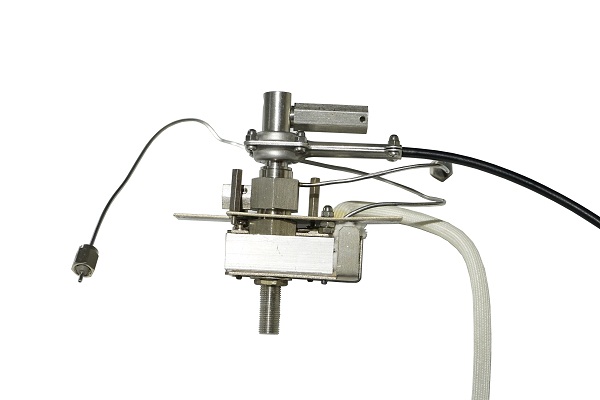The hydrogen flame ionization detector (FID) can adjust the baseline to zero before ignition, but after ignition, the baseline cannot be adjusted to the position before ignition. This phenomenon is that the ignition cannot be zeroed. The reasons for the failure to zero after ignition are: ion pool water; polarization voltage reverse; gas path, detector contamination; column loss is serious; airflow adjustment is improper; baseline compensation has no effect. The troubleshooting of this type of fault can be checked and eliminated according to the following steps: (1) Baseline compensation knob action check: Record the direction of the baseline deviation after ignition, and remove the hydrogen flame signal cable from the ion chamber side. At this time, after rotating the baseline compensation button, the direction and magnitude of the baseline compensation deflection can be observed. In normal time, the baseline compensation direction should be opposite to the signal deviation direction. If the baseline compensation direction is in the same direction as the signal deviation direction, consider changing the polarity of the polarization voltage. If the baseline compensation is not adjusted after adjusting the baseline compensation knob, or if the deviation is too small, it should be transferred to (9). (2) Detector temperature check: When the hydrogen flame is ignited, the temperature of the ion chamber must exceed 100 °C, otherwise the ion chamber will accumulate moisture, destroying the insulation of the collector, and the amplifier cannot be zeroed. Another point to note is that after the chromatograph is started, although the detector indicates that it has reached 100 °C or above, the ion chamber has a length from the center heating body. Therefore, it takes a while to wait for the true temperature of the ion chamber to reach 100 °C or higher. Then go to the ignition. (3) Is the flame too large: directly observe whether the hydrogen flame after ignition is too large, too red, whether the flame has burned onto the collecting plate, and if so, press (4). (4) Airflow adjustment: adjust the flow of each gas path to make the flame smaller, and set the most airflow ratio if necessary. If oxygen is used instead of air, care should be taken to increase the flow rate of the nitrogen tail gas to the limit. After adjusting the ratio of the gas flow rate and observing the hydrogen flame, it is advisable to use a small flame with a slight blue light or no light. (5) Whether the baseline can be zeroed after the column temperature is lowered: The temperature of the column is lowered to room temperature, and the baseline can be adjusted to zero. If it can be zeroed, the column loss is serious. (6) Serious treatment of column loss: In the case of serious column loss, first notice whether the column has been aged. If the column has been aged, but the baseline cannot be zeroed, it is necessary to consider changing the operating conditions or replacing the new column. (7) The gas path and the detector are seriously smeared: the serious gas path and the detector are dirty. It can be seen from the red and yellow color of the hydrogen flame. The thorough treatment method is to clean the gas path and the detector. An important reason for the pollution of the gas path is that the purity of the gas source is not sufficient. It can be confirmed that the baseline can be re-zeroed after replacing the new filter and purifier. (8) Ion chamber water treatment: extinguish the hydrogen flame and raise the temperature of the ion chamber. After 1 hour, the ion chamber should be allowed to dry, and then dry and then normal ignition operation. (9) Polarization voltage reversal or baseline compensation circuit failure treatment: After confirming that the polarization voltage polarity is reversed, the polarity can be reversed by rotating the polarization voltage polarity switch or reconnecting the polarization voltage lead plug. When the baseline compensation circuit has no effect or the effect is too small, it is necessary to check whether the baseline compensation potentiometer is desoldered, whether the sliding head is malfunctioning, whether the baseline compensation voltage value is correct, and whether there is open circuit and short circuit in the baseline compensation circuit. Carbon Steel Flange,Carbon Steel Pipe Flanges,Carbon Steel Blind Flanges,Carbon Steel Forged Flanges Shandong Zhongnuo Heavy Industry Co.,Ltd. , https://www.zhongnuoflange.com